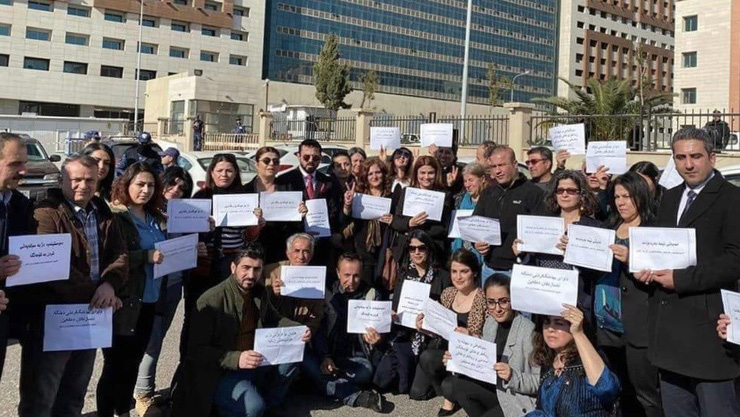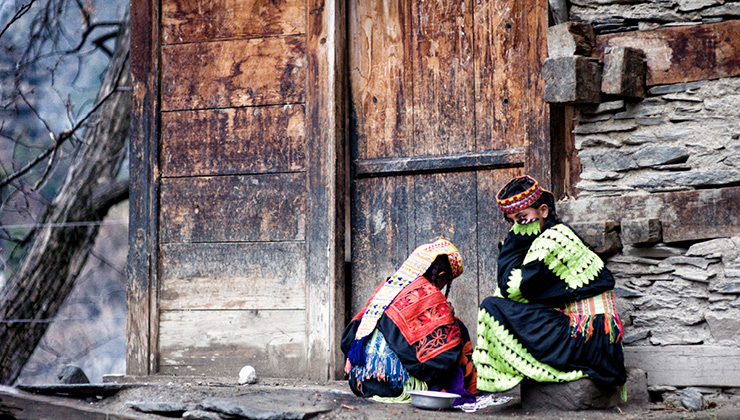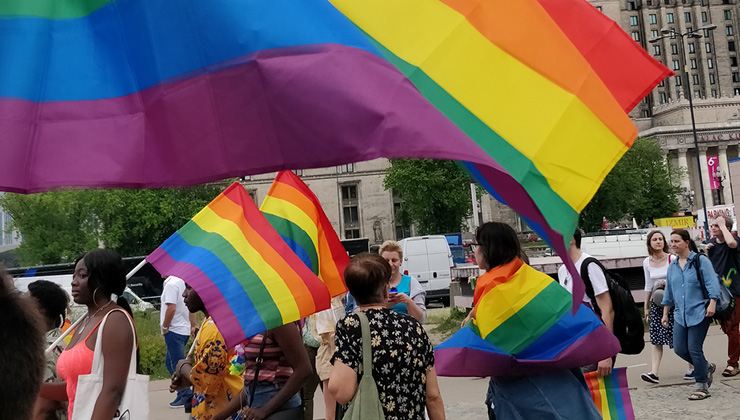In this long-read Aida A. Hozić critiques the Dayton Peace Agreement and the problems associated with ethic power-sharing peace agreements where gendered political and socio-economic policies only serve to strengthen divisions. From Brussels to Bosnia and Herzegovina, Aida tells us why we must pay attention to the limits of “manly” peace agreements which neglect gender, and instead continue to work for gendered justice and peace simultaneously.
November 2020 marked the 25th anniversary of the Dayton Peace Agreement, which ended the 1992-1995 war in Bosnia and Herzegovina (BiH). Negotiated at the Wright-Patterson Air Base in Dayton, Ohio, five years before the adoption of the UN Security Council Resolution 1325 on women, peace and security (WPS), the agreement is viewed as the great diplomatic achievement of the late U.S. Ambassador Richard Holbrooke and of the Clinton administration.
Despite the fact that widespread violence against women during the Bosnian war, rape in particular, had led to the much overdue recognition of gender-based violence as a crime against humanity in the international courts of justice, neither women nor gender were ever considered at Dayton. Indeed, no women – apart from Holbrooke’s wife, journalist Kati Marton – participated in the negotiations of this agreement.
Both by the composition of key actors at the negotiating table, and by its main features (recognition of territorial gains acquired through ethnic cleansing and genocide), Dayton was a quintessential ‘strong men’s’ agreement. Its ramifications still exert costly and deeply gendered political and socio-economic consequences not just on BiH but on the broader Southeast European (SEE) neighbourhood. The twin anniversaries of Dayton and SCR 1325 provide us with an opportunity to reflect upon them in relation to the broader WPS Agenda.
But let me do something unusual and commence this analysis of Dayton and its legacy from a different corner of Europe – from Molenbeek, a neighbourhood in Brussels, pejoratively called Europe’s “Jihad Central” due to its links to a series of terrorist attacks over the last two decades. In the fall of 2020, Molenbeek was again in the news as the neighbourhood with the highest per capita number of Covid-19 cases in Belgium, the country which has itself long held the record for the highest per capita number of Covid-19 cases in Europe.
I do not start with Molenbeek because of facile links between Europe’s radical Islam groups and BiH’s large Muslim population – although, perhaps, the persistent Islamophobia in Europe and in the United States would ask for just such parallels. Rather, I wish to emphasise the high human costs that institutionalised ethno-religious divisions exert on people’s lives, made so visible by the pandemic.
In other words, I wish to draw attention to structural similarities between Belgium and BiH, which contrary to many proponents of power sharing agreements do not bode well for either of these two countries: indeed, they might have made the deadly tolls of Covid-19 possible. For both Belgium and BiH are places where institutionalised divisions and exclusions breed other divisions and exclusions, and where social discontent and disease can easily get trapped in a neighbourhood and easily stay out of sight. And in that respect, Belgium and BiH are similar to other power-sharing places such as Northern Ireland, Cyprus, North Macedonia or Lebanon.
Belgium and BiH are places where institutionalised divisions and exclusions breed other divisions and exclusions, and where social discontent and disease can easily get trapped in a neighbourhood and easily stay out of sight.
My key message is this: ethnic power-sharing arrangements are problematic even at the seat of the EU, and peace agreements based on racialised logic of partition or quasi-partition and containment generate their own gendered pathologies. In short, post-Dayton BiH is by no means exceptional in world politics. But BiH deserves a moment of attention for several additional reasons: because of the “manly” role that the Dayton Peace Agreement and BiH have played in U.S. diplomatic history and in the memory of its foreign policy establishment, which is now returning to power in Washington DC; because of the potential, therefore, for Dayton to be used as a model for other “manly” peace agreements and for other little BiHs to be replicated and/or sustained elsewhere (again – consider the fate of similarly segregated political spaces in Northern Ireland, Cyprus, Lebanon or the inspirational role of Dayton in negotiations of the Ohrid Framework Agreement in Macedonia and Ahtisaari’s Kosovo Plan); and because of the lingering, again “manly”, security threats stemming from a conflict that many analysts would characterise as “frozen” amidst renewed calls for further ethnic partitions, in BiH but also in (and linked to) Kosovo as the allegedly stabilising solutions for the entire SEE region.
ethnic power-sharing arrangements are problematic even at the seat of the EU, and peace agreements based on racialised logic of partition or quasi-partition and containment generate their own gendered pathologies.
Finally, in this moment of increased interest in feminist foreign policy, even in the US, and of our continued anniversary conversations about the relevance of the WPS Agenda, I want to emphasise how this gendered – “manly” – logic of the peace agreement has precluded a realisation of any alternative futures for BiH and SEE. When considering the future of the WPS Agenda, or reasons why we should continue fighting for its implementation, we must not lose sight of the limits that those agreements, which had paid no attention to gender when they were first negotiated, placed on everyone, not just the women.
Let us interrogate these “manly” reasons and their implications for Bosnia’s – and perhaps also for the U.S./Europe – future and security by first acknowledging that there is not one, but at least three Daytons that we are talking about. First, there is the Dayton Peace Agreement now remembered as “one of the great U.S. diplomatic triumphs of the past generation” and a “historic diplomatic achievement.” This is the Dayton, which, as Ambassador Christopher Hill said at the 20th Anniversary Dayton Conference, held at Brown University, was never only about Bosnia itself, but about the future of the transatlantic relationship, about America’s leadership in the world, and about the incorporation of the human rights values into the modern state system – and not necessarily in that particular order.
As Derek Chollet says in his history of the path towards the Dayton Peace Agreement, “Dayton brought to an end one of the most difficult periods in in the history of U.S.-European relations.” The agreement did not only end the Bosnian war but “it gave life to [the] Clinton Administration’s strategy for Europe and that strategy’s core element, NATO enlargement,” it “blazed important new paths in U.S. – Russian relations,” and it “was a turning point for the Clinton Administration’s foreign policy specifically and America’s role in the world generally.”
This is the Dayton Peace Agreement that also serves as the illustrative example of so-called “muscular intervention” or “coercive diplomacy” – in other words as the proof that (U.S.) diplomacy can only work if backed by significant force, and vice versa. In addition, Dayton has been an important bonding experience for a number of the U.S. and European diplomats, the so-called “Bosnian generation.”
Many U.S. politicians, including President Joseph Biden, diplomats and academics have created affective links with Bosnia and the Balkans, which now serve as formative experiences for their research/practice and the lens through which they observe other global conflicts. It was Bosnia, which apparently loomed behind the U.S. and the UK’s decisions to intervene in Libya in 2011 but also behind Western indecision to decisively aid opposition forces in Syria when President Obama famously said that “former farmers or pharmacists or teachers” were not hardened enough as fighters to be credible and, therefore, worthy of the U.S. support.
Second, there is the Dayton of the Bosnian political elites who have learned how to contest and accommodate the provisions of the peace agreement and its dysfunctional institutions through clientelism, nepotism, corruption, blackmail and/or racketeering. This is the Dayton that continues to produce the same political outcomes, election after election after election – a gift that keeps on giving, in part because it structurally disenfranchises a category of people known in Bosnia as “others” (those with no particular ethnic affiliation, minorities such as Jews, Romas, Italians, Slovaks, Ukrainians, and people with different and/or mixed racial and ethnic backgrounds.
At the already mentioned conference at Brown in 2015, Ambassador Hill – who was Holbrooke’s deputy at Dayton – spoke about the “real” history of people in Bosnia and the Balkans and the way that this “real” history was acknowledged at Dayton by recognising the rights of its three constitutional peoples – Bosniaks (Muslims), Serbs and Croats. Dayton heeded to their (particularly Serbs’) claims to territory and established limits to the one-man-one-vote principle. Most importantly, the issues that are traditionally viewed as “feminine” and are particularly acute in post-conflict spaces – education, health care, invisible and informal labour, family care work, reparations for war-time violence – have never been seriously considered, especially in relation to justice, and continue to be trumped by security and stability concerns.
Third, there is the Dayton lived on a daily bases by BiH citizens – a country where babies die because of ethnified bureaucracies, where train tracks exist but trains no longer travel anywhere, where building some 60 km of highway has taken nearly 20 years, where the key cultural institutions (including the National Museum in Sarajevo) were shut down for years. This is the country, where – as Azra Hromadzic has written so wonderfully – restrooms are about the only public places where the youth from different ethnic backgrounds can meet and date; where children embody ethnic differences that were violently inscribed on their parents’ bodies, and where ethnic miscegenation is now very rarely practiced. This is also the country – currently the chief concern of European diplomats – of mass exodus, particularly among the young and well-educated (medical personnel and nurses especially), which has made health care amidst the Covid-19 pandemic so much more difficult.
the issues that are traditionally viewed as “feminine” and are particularly acute in post-conflict spaces – education, health care, invisible and informal labour, family care work, reparations for war-time violence – have never been seriously considered, especially in relation to justice, and continue to be trumped by security and stability concerns.
The first two Daytons – the one etched in the memory of Western diplomats and the one performed by BiH political elites – co-exist quite well with each other. Their common interest is in maintaining the political status quo and exclusion of all other actors who could threaten their positions in power. Their achievement, and the standard of political/democratic practice, is that “people are no longer killing each other.” Hence, when people, those “others” unrecognised by the Dayton Peace Agreement, happen to rise and demand more than “not killing” from their political representatives, as was the case during the Bosnian spring of protests in 2014, the EU and the U.S. response is to increase funding and training for Bosnia’s surveillance programmes and anti-riot police.
At the 20th anniversary conference in Dayton, former U.S. Ambassador to Bosnia Thomas Miller asked Jonathan Moore, then U.S. Ambassador to the OSCE mission in BiH, how would he brief an incoming U.S. President about BiH’s political prospects. Ambassador Moore, whose portfolio combined education and counter-terrorism, promptly responded: “The U.S. has limited resources. Bosnia is fine. I would recommend doing nothing.” These days, Gerald Knaus, founding chairman of the influential think-tank European Stability Initiative and (an occasional) advisor to the German Chancellor Angela Merkel, similarly maintains that BiH is fine, especially in comparison to other partitioned places, such as Cyprus, Northern Ireland or Nagorno Karabakh.
restrooms are about the only public places where the youth from different ethnic backgrounds can meet and date; where children embody ethnic differences that were violently inscribed on their parents’ bodies, and where ethnic miscegenation is now very rarely practiced.
Thus, instead of being mindful – if not outright ashamed – of these painful, spatially inscribed divisions on the European periphery (consider, for example, that the rate of suicides in Belfast since the Good Friday Agreement – mostly by men suffering from PTSD in the aftermath of the violent conflict – now exceeds the number of victims during the Troubles), Western diplomats view these spaces as problems well-solved. And that, obviously, begs the question: if Bosnia is fine, according to Moore and Knaus, for whom is it not fine? Whose concerns are being heard in international fora and whose continue to be neglected?
For, in the meantime, the third Dayton, largely ignored by both domestic and international elites, festers in the background. Bosnia and Herzegovina shares the unenviable honour with Kosovo of having the highest level of youth unemployment in the world (albeit alleviated lately by demographic trends and migration to the EU). One would expect that someone in Washington or in Brussels would at least wonder how is it that these two countries, which were placed under international supervision and received billions of dollars in aid, have such poor economic performance? Where did we go wrong? Where did all that money go?
Some believe that Biden’s Presidency raises hopes of renewed U.S. interest in BiH, obviously assuming that Biden would not be all too busy attending to the U.S. itself. But the hope has another dangerous implication: it illustrates the degree to which clientelism in relation to great powers dominates political thinking and political practice in the entire region. In addition, and to make these geopolitical matters even more complicated, not only does Russia continue to treat ambiguous spaces like Republika Srpska, Northern Kosovo and even southern Serbia as its playgrounds, Berlin is currently signalling that it might unilaterally replace the current international supervisor in Bosnia, Valentin Inzko, with a CSU loyal Christian Schmidt. The rift in EU-US relations over BiH may be just a trial balloon for a more “muscular” German and European People’s Party policy within and beyond the EU.
In contrast to these “manly” affairs, gender issues and “feminine” socio-economic problems continue to receive very little attention, even in the numerous “Dayton 25” conferences. There is, of course, continued lip-service being paid to “women’s empowerment,” but it never goes beyond requests for more (individual) women’s representation in politics.
National Action Plans for WPS in BiH, as elsewhere, focus mostly on issues of women’s participation in high-level decision-making positions such as in the security forces and peacekeeping missions. As Bjorkdähl and Selimovic have already argued, based on their close analysis of NAPs in BiH and Rwanda, “the construction of participation is linked to the constitution of women as passive rather than active, and follows a conventional approach of ‘add women and stir.’ Women are added but the institutions, discourses and practices are not changed.” Without additional funding for socio-economic empowerment, and inserted into existing ethnic power-sharing arrangements, the WPS Agenda loses its transformative potential. Not surprisingly, individual women politicians in the SEE region have proven to be excellent ethno-nationalists themselves: scant in numbers but powerful in image creation, they faithfully execute and placate the “manly” twin agendas of militarised security and privatised, extractivist economics.
Analyses of these successful gender entrepreneurs would lend further evidence to Marie Berry’s and Milli Lake’s inconvenient findings that efforts at women’s inclusion may often mask other forms of exclusionary politics. Their participation only obscures the degree to which entrenched ethno-nationalist interests render other women and identities invisible and other ways of envisioning politics impossible. In BiH, as in the U.S., focus on elite diversity only proves that feminist understandings of the world cannot be reduced to identity politics based on representation only.
In BiH, as in the U.S., focus on elite diversity only proves that feminist understandings of the world cannot be reduced to identity politics based on representation only.
And that brings us back to Molenbeek, the Brussels neighbourhood with the highest rate of unemployment in Belgium (three times the national average) where social problems and injustices have been ignored for too long, hidden from view by the wealth of surrounding areas and by the large numbers of Eurocrats and internationals working in the European capital.
The links between Molenbeek and former Yugoslavia – through arms and people trafficking – have already been documented. The pandemic reveals how important all other “feminine” aspects of security are – access to health care, availability of medical personnel, economic safety nets, childcare and child-schooling, gender equality in households and in public.
By thinking about the pandemic toll in Belgium and BiH not just in proximity to each other, but on a continuum of gendered circuits of violence and (re)distributions of harm and comfort, we are forced to reconceptualise the notions of war and peace, conflict and post-conflict.
The tension between pragmatism and feminist understandings of security is not easily resolved through the WPS Agenda, even less so in its implementation, but it constitutes an opening for different readings of politics and alternative visions of future. While taking WPS seriously does not melt away “manly” concerns over geopolitics, it allows us to think about gendered justice and peace simultaneously in the heart of Europe and on its periphery, in the United States and in Germany, as much as in wounded places, such as Bosnia and Herzegovina. By doing so, it could ensure that the doses of the peace medicine are administered more equitably, with consideration and self-reflection, not only to presumed patients but to doctors as well.
The views, thoughts and opinions expressed in this blog post are those of the author(s) only, and do not reflect LSE’s or those of the LSE Centre for Women, Peace and Security.
Image credit: Lieven Soete (CC BY-NC-SA 4.0)






Thank you for the enlightening blogpost, Professor Hozic.
I would like to ask you a question regarding the role of the Dayton Peace Agreement with regard to the current status of women in BiH. In your opinion, is it correct to say that the “manly” approach – both in terms of women underrepresentation and lack of gender clauses – of the Dayton peace agreement has been deemed one of the main causes of the failure of the National Action Plans (NAPs) for the implementation of the Women Peace and Security (WPS) agenda in the Bosnia and Herzegovina’s transition?
Dear Rachele – thank you for reading the post and for this great question. As you are probably aware, comparative review of NPAs conducted by Caitlin Hamilton, Nyibeny Naam, and Laura J. Shepherd –
https://www.wpsnaps.org/app/uploads/2020/03/Twenty-Years-of-Women-Peace-and-Security-National-Action-Plans_Report_Final_Web.pdf
demonstrates that most NPAs exhibit similar features to BiH – with their primary emphasis on participation pillar of the WPS Agenda. Also, in implementation BiH may not be the worst offender although BiH now has the lowest gender equality index in Europe – https://www.opendemocracy.net/en/can-europe-make-it/women-in-bosnia/
The issue with Dayton – and with other power-sharing agreements, as Maria-Adriana Deiana has also convincingly argued (https://pureadmin.qub.ac.uk/ws/portalfiles/portal/167291806/MDeiana_Dayton_and_WPS_Nationalism_and_Ethnic_Politics_Final.pdf) is that exclusive focus on key ethnic groups as the only significant political actors basically excludes all other possible identifications. Hence, while Dayton may not be the only factor that has pushed women’s rights and gender issues backwards in BiH (or in Northern Ireland, Lebanon etc.) it is the most important institutional barrier for any other – but ethnic – politics to come to the fore, including politics attentive to gender equality. And vice versa – by using the gendered lens in our analysis, we can more easily see all other limitations that such power-sharing agreements pose to political life.
aida
Dear Professor Hozić, thank you very much for your exhaustive reply.
I completely agree on the fact that the formulation of the peace agreements as well as the diplomatic and political context that surrounds peace negotiations may have great long-terms gender consequences on the post-conflict transition of a country, as you egregiously expressed it with regard to BiH.
I would also add two supportive thoughts. First, in the specific context of BiH, Dayton peace agreement has had a particularly strong legal power (and this is not always the case. As you are probably aware, the controversial legal nature of the peace agreements has been the object of Christine Bell’s research in “Peace Agreements: Their Nature and Legal Status”) considering that one of its Annex (Annex 4) was adopted as the Bosnian Constitution.
Second, women’s voice in the Bosnian post war only appeared in judicial contexts (the ICTY first and the Bosnian domestic judiciaries later) for the recognition of the conflict-related sexual violence perpetrated during the war. While it must be recognized the great job of the courts in criminalizing sexual violence and in internationalizing the issue of conflict-related violence against women (CRVAW), could we say that the almost exclusive trust on judicial mechanisms contributed to obscure gender issues in the diplomatic and political agenda?